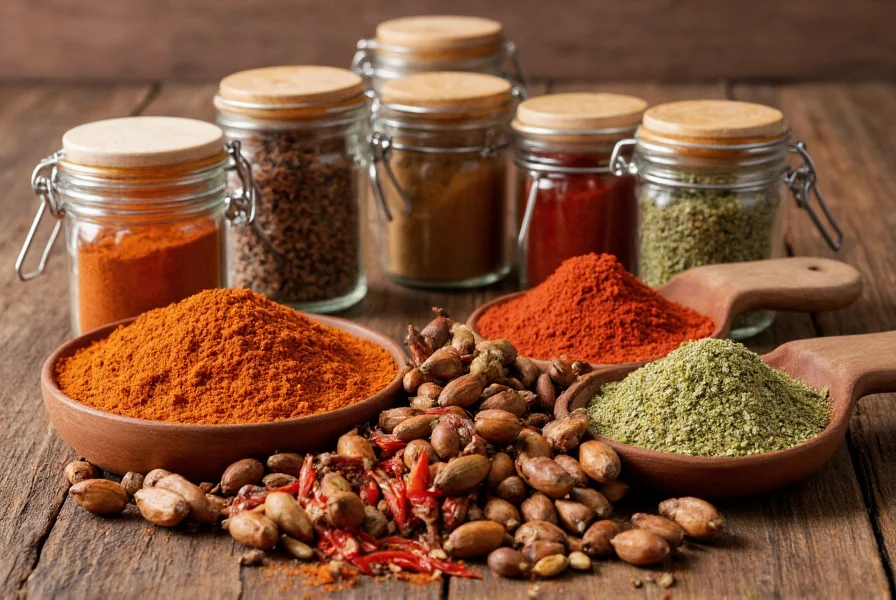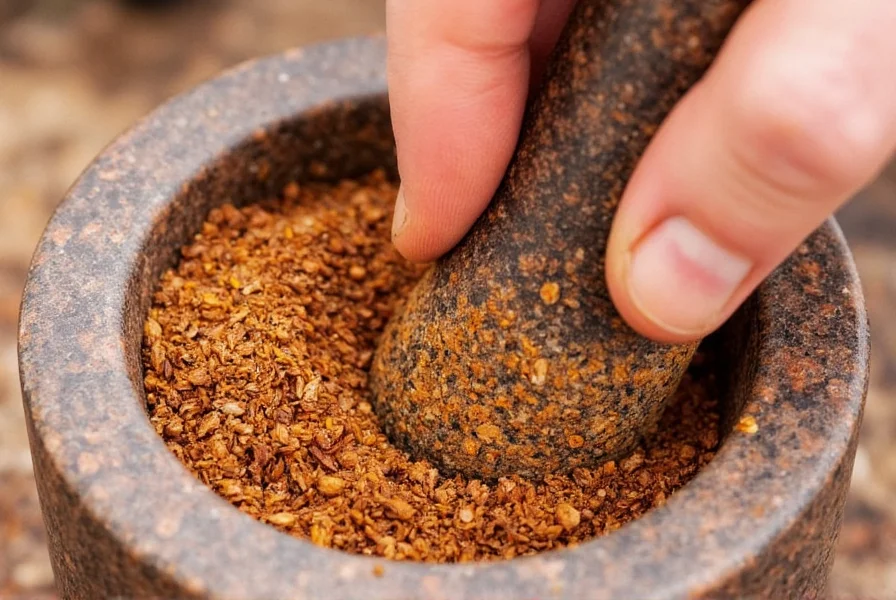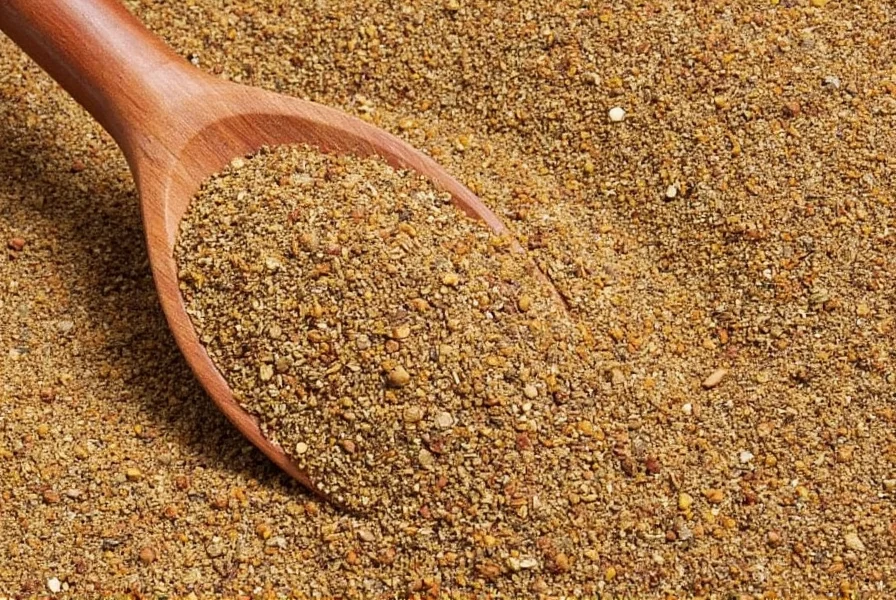If you're reaching for your spice rack only to find your cumin container empty, don't panic. Many common pantry staples can effectively replace cumin while maintaining the integrity of your dish. Understanding cumin's distinctive earthy, warm, and slightly citrusy flavor profile is key to selecting the right substitute for your specific recipe.
Understanding Cumin's Unique Flavor Profile
Cumin brings a distinctive earthy warmth with subtle citrus notes and a hint of bitterness that's difficult to replicate exactly. This spice plays a crucial role in many global cuisines, particularly in Mexican, Indian, Middle Eastern, and North African dishes. When seeking cumin alternatives for cooking, consider both the flavor profile and the dish's cultural context to maintain authenticity.
Top 5 Practical Cumin Substitutes
Not all cumin replacements work equally well across different recipes. The best substitute for cumin in chili differs from what works in Indian curries or Middle Eastern dishes. Here's a detailed comparison of effective alternatives:
| Substitute | Ratio | Best For | Flavor Notes |
|---|---|---|---|
| Chili powder | 1.5 tsp per 1 tsp cumin | Mexican dishes, chili, tacos | Milder heat, similar earthiness |
| Garam masala | 1 tsp per 1 tsp cumin | Indian curries, rice dishes | Warmer, more complex spice blend |
| Coriander | 1:1 ratio | General savory dishes, stews | Milder, citrusy, less earthy |
| Paprika + oregano | 1 tsp paprika + 1/4 tsp oregano | Mediterranean dishes, rubs | Earthy with herbal notes |
| Taco seasoning | 1.5 tsp per 1 tsp cumin | Tacos, fajitas, Tex-Mex | Pre-blended with complementary spices |
Cumin Alternatives by Cuisine Type
The best cumin replacement depends heavily on the specific dish you're preparing. What works for Mexican food substitutes won't necessarily work for Indian recipes.
Mexican and Latin American Dishes
For authentic Mexican cuisine substitutes, chili powder makes the most effective cumin alternative. Most commercial chili powders already contain cumin along with other complementary spices like garlic powder and oregano. Use 1.5 teaspoons of chili powder for every teaspoon of cumin called for in your recipe for tacos, chili, or enchiladas. If making chili without cumin, consider adding a pinch of smoked paprika to enhance the depth of flavor.

Indian and Middle Eastern Recipes
When cooking Indian dishes without cumin, garam masala provides the closest flavor profile. This spice blend typically contains cumin along with coriander, cardamom, and other warming spices. Use a 1:1 ratio when substituting for ground cumin in curries or rice dishes. For Middle Eastern recipes, a combination of coriander and a small amount of cinnamon works well as a cumin replacement in hummus or falafel.
General Savory Dishes and Marinades
For everyday cooking substitutes, coriander offers the most versatile cumin alternative. While milder and more citrus-forward than cumin, it provides a similar earthy base note in soups, stews, and roasted vegetables. Use equal parts coriander for cumin in most general applications. For meat rubs, smoked paprika creates a surprisingly effective cumin substitute with its deep, earthy notes.
Situations Where Substitutes Fall Short
While these alternatives work well in most cases, certain dishes rely so heavily on cumin's distinctive flavor that substitutes noticeably alter the final product. Traditional Indian dishes like jeera rice or certain Middle Eastern spice blends like baharat lose authenticity without real cumin. In these cases, consider making a small batch of homemade cumin substitute by toasting and grinding coriander seeds with a pinch of fennel and caraway.
Creating Your Own Custom Cumin Blend
For the most effective cumin replacement in recipes, create a custom blend tailored to your specific dish:
- Mexican-style blend: 2 parts chili powder, 1 part smoked paprika, 1/2 part garlic powder
- Indian-style blend: 2 parts coriander, 1 part turmeric, 1/2 part cardamom
- General purpose blend: 2 parts coriander, 1 part paprika, 1/4 part cumin (if you have just a little left)
Toast the whole spices first, then grind them for maximum flavor. This approach to cumin alternatives for cooking gives you control over the final flavor profile while working around your spice shortage.

Practical Tips for Using Cumin Substitutes
When replacing cumin in recipes, remember these practical tips for best results:
- Add substitutes gradually and taste as you cook—most alternatives have different potency levels
- For whole cumin seed substitutes, crushed coriander seeds work best in pickling and bread recipes
- Dry-toast spice substitutes before use to enhance their flavor complexity
- Consider the dish's cooking time—longer cooking allows substitute flavors to meld better
- When making chili without cumin, add a splash of lime juice to brighten other flavors
When to Skip the Substitute
Sometimes the best approach is acknowledging that certain dishes simply won't achieve authentic flavor without cumin. For specialty recipes where cumin is the star ingredient, consider adjusting your menu rather than compromising flavor. Many grocery stores now carry single-serve spice packets specifically for these situations, making it easy to get just enough cumin for that one recipe without committing to a full container.
Frequently Asked Questions
Can I use curry powder instead of cumin?
Yes, but with caution. Curry powder typically contains cumin along with other spices, so it can work as a cumin substitute in Indian dishes at a 1:1 ratio. However, it will add additional flavors that may alter your dish's profile, making it less suitable for Mexican or Middle Eastern recipes where cumin alternatives should stay within cultural flavor parameters.
What's the best cumin substitute for chili?
Chili powder makes the most effective cumin replacement for chili, using 1.5 teaspoons of chili powder for every teaspoon of cumin. For deeper flavor in chili without cumin, add a pinch of smoked paprika and a small amount of cocoa powder, which complements the other spices while providing similar earthy notes.
Can I skip cumin entirely in a recipe?
You can omit cumin, but the dish will lack its distinctive earthy warmth. For better results when you have no cumin substitutes available, increase complementary spices like garlic, paprika, or coriander by 25-50% to maintain flavor balance. In most cases, even a partial substitute creates a more authentic result than simply leaving it out.
Is cumin the same as caraway?
No, cumin and caraway are different spices though they share some flavor similarities. Caraway has a more pronounced anise-like flavor compared to cumin's earthy warmth. While caraway can work as a cumin substitute in some European dishes, it's not ideal for Mexican or Indian recipes where authentic cumin alternatives should maintain cultural flavor profiles.
How do I make a quick cumin substitute with common spices?
Combine 1 teaspoon of coriander with 1/4 teaspoon of smoked paprika and a pinch of cinnamon for an effective quick cumin substitute. This blend works particularly well as a cumin replacement in recipes for soups, stews, and roasted vegetables. For Mexican dishes, use chili powder instead, and for Indian recipes, garam masala provides the most authentic flavor replacement.











 浙公网安备
33010002000092号
浙公网安备
33010002000092号 浙B2-20120091-4
浙B2-20120091-4